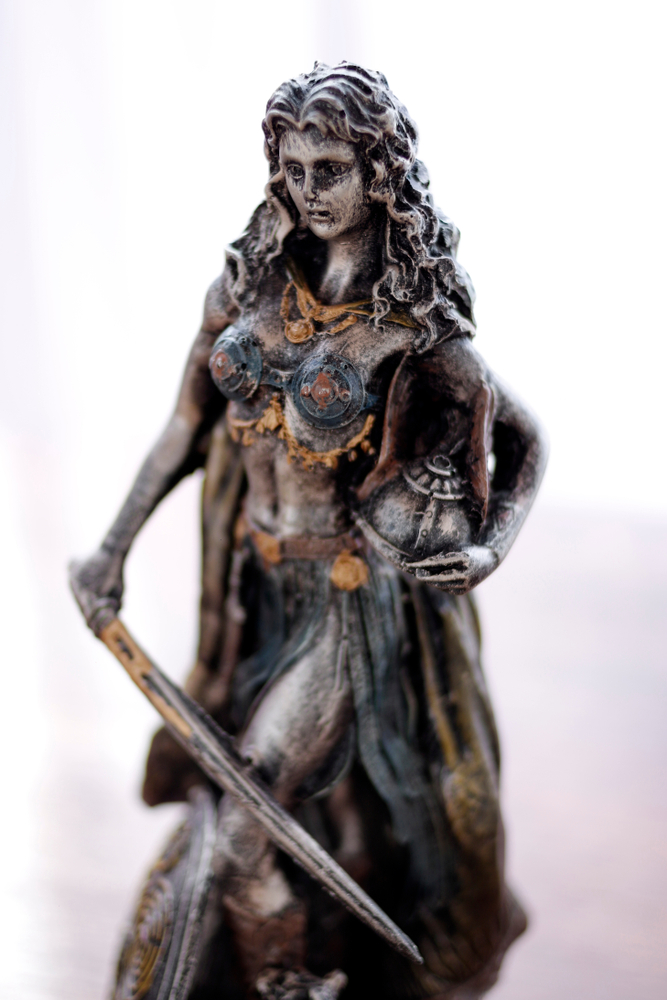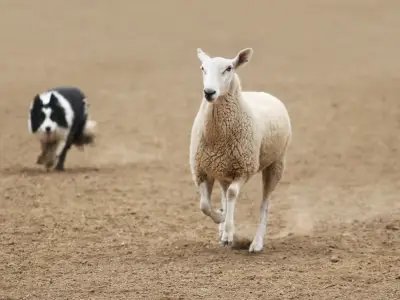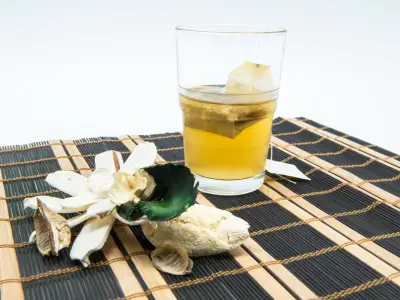The Norse goddess of love, Freya is another fascinating member of the principle group of Norse gods and goddesses. To some ancient writers, Freya’s status is almost on par with that of Odin, the king of Asgard, yet she tends to not be thought of in those terms now.
As part of our ongoing series in support of our Norse mythology diploma course, we’re going to put your knowledge of the Lady of the Norse pantheon to the test!

Table of Contents
Who is Freya?
Freya is one of the most important of the Norse goddesses and serves as the female counterpart of and (possibly twin) sister to the god Freyr. Freya’s father was Njord, a Vanir god of the sea, and accordingly, Freya was also a Vanir goddess. Freya’s mother is unknown, but some speculate that it could have been an old Germanic goddess of peace and plenty named “Nerthus”. After the great Aesir-Vanir war, Freya was given an honorary status among the Aesir: the preeminent deities. In popular culture, dead Norse warriors are assumed to have gone to Valhalla, Odin’s hall, but in the old Norse tales, Freya also played a large role. She actually chose one half of the slain Norse heroes to live in the great field of Fólkvangar, where she built her palace of Sessrúmnir. Only those who were unchosen by Freya went to Valhalla. Her choice appears to have depended in part on social status but also on bravery and looks! Freya’s spouse was Odr, and she had two daughters named Hnoss and Gersemi (whose names both mean “treasure”).
What Does the Name Freya Mean?
The goddess Freya in Norse mythology was also variously known by the names Mardöll, Hörn, Gefn, and Syr. But even her main name of “Freya” was rendered variously as Freja, Freyia, Freyja, Fröja, Frøya, Frøjya, Frua, and more. Regardless, her name means “the lady”. It’s also at the root of the word “frau”: the title of a married woman. It’s entirely possible that her name began life as an informal nickname, and was then escalated to the name of a goddess.
What Does Freya Look Like?
Freya is usually presented as an enchanting woman with flaxen hair. Gentle and agreeable in nature, Freya usually used her beauty to achieve her ends, along with a combination of gifts - both material and sexual. She was said to wear a cloak of falcon feathers that bestowed the power of flight to anyone who wore it, and wore a legendary necklace named Brísinga men.
Want to put your knowledge of the Norse pantheon to the test?
Centre of Excellence has you covered.
Visit our Norse Gods and Goddesses Hub to sample the first 2 modules of our £127 Norse Mythology Diploma Course for FREE
What is Freya the Goddess Of?
Freya is most enduringly famous for being the Norse goddess of love, lust, blessings, and fertility. Something of a pleasure seeker, Freya was once accused by the trickster god Loki of having slept with every one of the gods and elves - including her own brother! However, she was actually also linked with battle and death. Like the male members of the Norse pantheon, she was thought to be a fearsome and bloodthirsty fighter who did not shrink from the battlefield.
Because of this, Freya’s nature contained a fascinating duality. As the goddess of love, you certainly wouldn’t have expected her to be associated with “evil”. However, this judgement was sometimes applied to her after she taught witchcraft to the Aesir. Previously, magic was exclusive to the Vanir. The magic she taught was Seidr, a mastery of fate that gave Freya almost unlimited powers of control and manipulation - even over the future. Seidr allowed Freya to weave new events into being, enabling victory, healing, or good luck, but also injury, death and great misfortune. Freya was also gifted in prophecy and was even thought to have instructed Odin in this art. In a sense, Freya’s role among the Aesir gods and goddesses mirrored that of itinerant shaman and sorceress figures among the wider Norse and Viking people.
One interesting parallel for Freya is that of Frigg, the spouse of Odin and the great queen of Asgard. Most of the old Norse literary sources that we tend to rely on portray Freya as being distinct from Frigg. However, the two figures certainly possess a lot of similarities. For one, Freya’s husband is named “Odr”: a figure who is often away on long journeys that cause Freya to cry tears of red gold. This being’s name and actions match the common portrayal of Odin extraordinarily closely! Freya and Frigg are also both depicted as being unfaithful to their husbands, although some scholars argue that Freya is the more promiscuous goddess. Ultimately, there’s a very real chance that an early Germanic goddess named “Frija” - the source for the Germanic word for “Friday” - came to be presented as two distinct goddesses in later Norse sources.
More Facts About Freya
- The pig was a sacred animal to Freya, and she was said to ride upon Hildisvíni, a boar with golden bristles. She also had a special affinity with felines and drove a chariot that was pulled by two domesticated black/grey cats!
- Freya’s mystery of Seidr - in essence a form of soothsaying - allowed her to foretell the destruction of the gods at Ragnarok.
- Freya owned a legendary necklace (or torc) that was called the Brísinga Men. She acquired it after spending a night with each of the four dwarf artisans who had made it; they wouldn’t sell it for any other price! Later in the tales of Freya, the Brísinga men was stolen by Loki, who was disguised as a fly. Freya turned to Heimdall to help recover the necklace, which he did by winning a fight with Loki when both gods had transformed into seals. An alternative ending to this tale presents Freya as the lover of Odin. When Odin discovered via Loki that Freya had slept with the four dwarves, he was furious and would only return her necklace if she used her powers to instigate an endless war between the two kings.
- Freya was generous to her servants. When her favourite, Ottar, wanted to know more about his ancestry, she transformed him into Hildisvíni, her pig familiar, and took him to a wise woman. Here, Freya “persuaded” the wise woman to reveal Ottar’s complex genealogy. She also arranged for the pouring of the beer of memory to make sure that Ottar didn’t forget what he’d heard.
- A hill giant once offered to build a fortress for the Aesir in exchange for the sun, the moon and Freya’s hand in marriage. The gods agreed, on the impossible condition that the work was completed by the first day of summer. Helped by his great steed, the giant soon threatened to achieve the impossible. Rather than losing Freya, the Aesir turned to Loki to distract the giant’s steed (he turned into a mare!) and scupper his efforts. The giant known as Thyrm also coveted Freya and stole Thor’s mighty hammer, Mjölnir, to use as leverage to gain her hand. Once again, Loki came to Freya’s aid. He was able to locate Mjölnir, leading to a hilarious conclusion where Thyrm - expecting to lift the veil upon his bride - was confronted by a very angry cross-dressed god of thunder!
If you’d like to find out more about Freya and the rest of the Norse pantheon, then be sure to visit our Norse Gods and Goddesses hub, where you can access the first two modules of our fantastic Norse mythology diploma course absolutely FREE of charge.
Want to put your knowledge of the Norse pantheon to the test?
Centre of Excellence has you covered.
Visit our Norse Gods and Goddesses Hub to sample the first 2 modules of our £127 Norse Mythology Diploma Course for FREE




